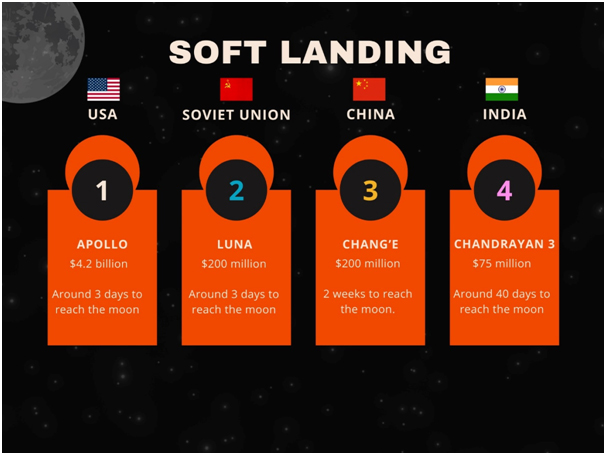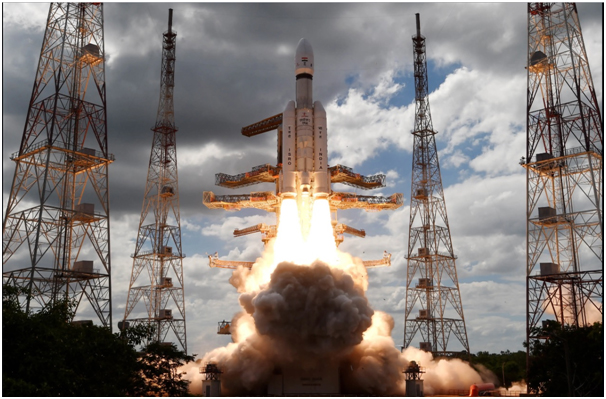Unpacking Chandrayaan-3's Stellar Success & What Lies Ahead!
Lunar Chronicles: Unpacking Chandrayaan-3's Stellar Success & What Lies Ahead!
We're thrilled to bring you a special edition of Lunar Chronicles, highlighting the remarkable success of India's Chandrayaan-3 mission! India has not only succeeded in soft-landing on the Moon but has also made significant scientific strides that promise to impact our understanding of Earth's celestial neighbor.
A Global Accomplishment: Countries That Have Soft-Landed on the Moon
Before we delve into the details of Chandrayaan-3, let's take a moment to acknowledge the exclusive club of nations that have achieved a soft landing on the Moon.
- United States (Apollo Program): After adjusting for inflation, the original cost of the Apollo missions was about $25.4 billion USD, equating to roughly $150 billion USD today. Each mission showcased efficiency and advanced technology, typically reaching the Moon in around 3 days.
- Soviet Union (Luna Program): The estimated cost of the Luna program was about $200 million. They also took approximately 3 days to reach the Moon. The last time the Soviet Union soft-landed a spacecraft on the Moon was with the Luna 24 mission on August 18, 1976.
- China (Chang'e Program): The estimated cost of the Chang'e 3 mission was about $200 million USD. Chang'e 3 was launched on December 1, 2013, and landed on the Moon on December 14. This two-week interval includes time spent in Earth's orbit for system checks and adjustments.
- India (Chandrayaan-3 Program): The estimated cost of the Chandrayaan-3 mission was about $75 million USD. The spacecraft embarked on its journey to the Moon's south pole taking 40 days to reach its destination.

Chandrayaan-3: India's Feather in the Cap
India's Chandrayaan-3 is the latest mission to successfully soft-land on the Moon, making it the fourth country to achieve this monumental feat. Here are some noteworthy aspects of the mission:
- Technological Marvels
Chandrayaan-3 has deployed various of sophisticated instruments designed for a diverse range of scientific tasks, from mapping the lunar surface in high resolution to conducting mineralogical studies.
- Scientific Contributions
The mission's scientific findings are expected to revolutionize our understanding of lunar geology and resources, impacting the future of space exploration.
India's Chandrayaan-3 has shown us exploring the Moon is possible for many more countries, not just a few! With smart planning and new tech, this mission made important discoveries about the Moon. It means more and more countries can join in the adventure of exploring space and uncovering the Moon’s secrets. This gives us all a chance to explore and learn about the universe together, bringing new ideas and surprises that can change the way we see our world. It’s a big step toward discovering more exciting things in space together!

The figure of Chandrayaan-3 taking off to the moon!
The Moon's Next Visitors
The lunar exploration field is abuzz with excitement as more missions are announced:
- Artemis Program: The U.S. plans to return to the Moon and land astronauts (November 2024)
- Chang'e 6: China aims to bring back samples from the Moon (May 2024)
- Beresheet 2: Israel's second shot at a soft landing (2025)
- VIPER: The U.S.'s rover, set to explore the Moon’s south pole (late 2024)
- Hakuto-II: A mission from the private sector, backed by the Japanese government (2024)
Australia's Lunar Ambition
The Australian Space Agency has ambitious plans to join the lunar exploration race by announcing its intent to send its first rover to the Moon. This mission is part of Australia's broader strategy to explore celestial bodies, aiming to make significant contributions to our understanding of the lunar surface and potentially uncover new insights into the Moon’s composition and history. The endeavor reflects Australia’s commitment to fostering scientific innovation and playing an active role in international space exploration, thus bringing a fresh perspective and additional resources to ongoing efforts to unravel the mysteries of our closest celestial neighbors. Keep an eye on the skies for more developments from Down Under!
